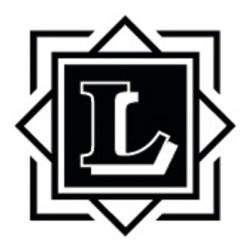Analysis
This case concerned the ownership of the property and copyright interests in the bulk of the works of Lynn Chadwick (‘the Artist’), one of the leading British sculptors of his time and whose works are exhibited at leading galleries and museums around the world. He died on 25th April 2003, but his estate was not yet wound up because of a dispute. The claimants were the Artist’s executors, who brought the issues before the court but did not take an active part in the proceedings. The first defendant was a company that had been owned by the Artist and his wife (‘the Company’), which claimed ownership of the works, and the second defendant was one of the Artist’s daughters (‘Sophie’). To the extent that Sophie succeeded in establishing that the works belonged to the Artist at his death, they would form part of his residuary estate and be held under his will for his four children equally.
The questions before the court were essentially as follows:
- (a)Whether the Company had legal or equitable title to (i) tangible property and (ii) copyright in works created by the Artist before the Company began trading in July 1973 (‘the Trading Date’); and
- (b)Whether the Company had legal or equitable title to (i) tangible property and (ii) copyright in works created by the Artist after the Trading Date.
Before the Trading Date
In relation to the works created before the Trading Date, the judge found that the tangible property in them had passed to the Company. The evidence showed that the Artist intended, and there was an express or implied agreement to that effect between the Artist and Company, to transfer the property in all his works to Company. The Artist and his wife were the directors of the Company, which was set up on the advice of his accountant to save tax by transferring the Artist’s existing business as a sole trader to a limited company and involved moving the ownership of the works to the Company.
Although the works were not formally delivered to the Company, there was no requirement for any formality in the transfer of personal property. The Company’s accounts, stock records and other books all showed that the Company took possession of the works. The freedom with which the Company subsequently dealt with all of the works as if it was the absolute owner of them reflected the transfer of ownership.
The judge also found that there had been an assignment to the Company of the beneficial interest in the copyright in the works. The Artist had been the first owner of the copyright of the works. As a transfer of the property in a work did not automatically carry the copyright and there had been no written assignment of the copyright within Copyright Act, s36, the legal title was vested in the Artist at his death; but the Company could call for the legal title of the copyright to be assigned to it. There was no requirement for writing for the creation of a beneficial interest in the copyright in favour of the Company and it had been the mutual intention and understanding of the parties that the Company would own the property and copyright in the Artist’s existing works and run the Artist’s business in a more tax efficient way, exploiting the Artist’s works as he had done as a sole trader before the Trading Day.
After the Trading Day
The judge found that the Artist was a director of the Company and also its employee. He had transferred all his tools to the Company. After the Trading Day, the Company paid for materials and castings and all works produced by the Artist were produced for the purposes of the Company’s business, being treated as part of its stock in trade until his death. Accordingly, the Company owned the tangible property in works created by the Artist after he began to work for the Company.
As to the copyright, after the Trading Day, the Artist was an employee of the Company and produced works in the course of that employment. The Company was therefore the first owner of the copyright (Copyright Act 1956, s4(4) and then Copyright, Designs and Patents Act 1988, s.11(2)).
JUDGMENT RICHARD SPEARMAN Q.C.: Introduction and nature of the dispute [1] Lynn Chadwick (‘the Artist’) was one of the leading British sculptors of his time. He was born on 24 November 1914 and died on 25 April 2003, leaving a prodigious artistic legacy. The Artist made a will dated 2 February 2000 (‘the Will’). Probate …Continue reading "Chadwick & ors v Lypiatt Studio Ltd & anr [2019] WTLR 1"

